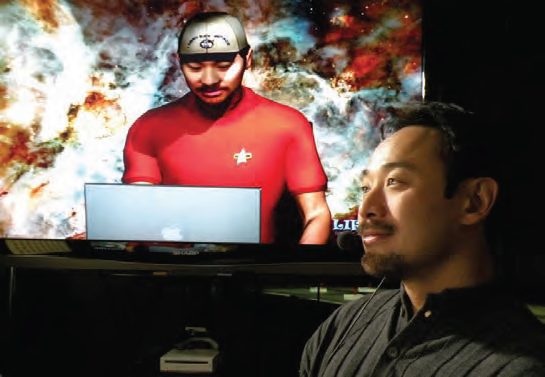2011 Inaugural Edition of the UIC OVCR Annual Report
December 20th, 2012

About
EDITOR’S NOTE: The 2011 inaugural edition of the Annual Report from the UIC Office of the Vice Chancellor for Research (OVCR) describes the campus’ breadth of programmatic research activities and the accomplishments and initiatives of its faculty and students. In particular, one of the publication’s highlighted faculty is Jason Leigh, UIC professor of computer science and director of the Electronic Visualization Laboratory (EVL). It describes several of Leigh’s recent achievements: his childhood interest in video games, his research in data visualization, his development of large computer displays, the development of the CAVE2™ next-generation virtual-reality environment, and his work on lifelike avatars.
Here are some excerpts from Leigh’s highlight:
…When asked to describe his research, Dr. Leigh said, “My research area is data visualization - developing techniques to help people make sense of the mountains of data that they are increasingly becoming buried under because the Internet has made it so easy to collect and store data, regardless of whether it is useful or not.”
…One specific area of interest is the development of computer displays that help with data visualization. “When we were studying biology or physics in high school, we used instruments like microscopes and telescopes,” he said. “Today, modern science records those types of images directly into the computer; in essence, the scientist never looks through those traditional optical microscopes and telescopes. The modern-day versions of those instruments are computer displays, like the one sitting on your desk. So my research is in developing better microscopes and telescopes to help people digest exponentially growing data.”
…“Experiencing the [CAVE2™ System] will be like stepping into the highest-resolution planetarium ever built,” he said, “but of course you can see much more than stars. You can look at 3D molecules for those who are searching for drugs to cure cancer. You can look at geologic data if you are searching for oil or studying earthquakes and tsunamis. You can even look at complex financial-trend data so that you can better govern a city, state, or country. You can create virtual reality simulations that help train students, soldiers, doctors, fire fighters, and astronauts. You can even play video games never before imagined.”
…UIC students also find Dr. Leigh’s work fascinating. “Students learn to develop video games; however, many go on to do much more. They develop visualization tools for Argonne National Laboratory, the Department of Homeland Security, or Pixar. They develop interactive exhibits for Adler Planetarium or the Science Museum of Minnesota.”
…Dr. Leigh chose UIC because “there is a lot of infrastructure here that would be difficult to get anywhere else. For example, UIC has some of the best medical-imaging technology in the world. We are also one of the few campuses that has extraordinary network bandwidth on the order of 30 gigabits per second and will soon increase to 100 gigabits per second.” He also finds that one of the great advantages to doing research in a university with so many diverse departments is that you can easily find collaborators. “It is an exciting time at UIC,” he said.
See the link on the right to read the article on Leigh.